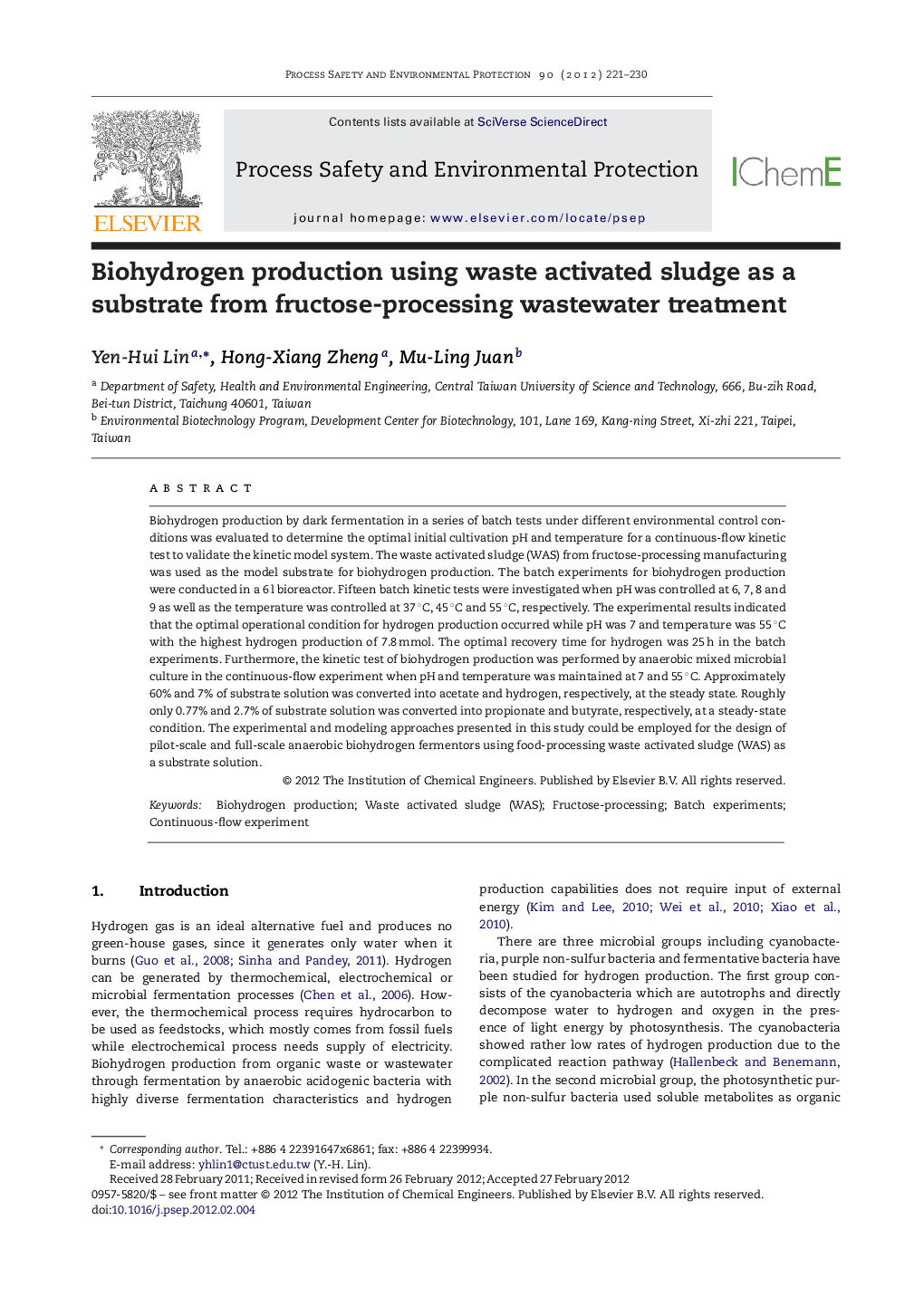| Article ID | Journal | Published Year | Pages | File Type |
|---|---|---|---|---|
| 588450 | Process Safety and Environmental Protection | 2012 | 10 Pages |
Biohydrogen production by dark fermentation in a series of batch tests under different environmental control conditions was evaluated to determine the optimal initial cultivation pH and temperature for a continuous-flow kinetic test to validate the kinetic model system. The waste activated sludge (WAS) from fructose-processing manufacturing was used as the model substrate for biohydrogen production. The batch experiments for biohydrogen production were conducted in a 6 l bioreactor. Fifteen batch kinetic tests were investigated when pH was controlled at 6, 7, 8 and 9 as well as the temperature was controlled at 37 °C, 45 °C and 55 °C, respectively. The experimental results indicated that the optimal operational condition for hydrogen production occurred while pH was 7 and temperature was 55 °C with the highest hydrogen production of 7.8 mmol. The optimal recovery time for hydrogen was 25 h in the batch experiments. Furthermore, the kinetic test of biohydrogen production was performed by anaerobic mixed microbial culture in the continuous-flow experiment when pH and temperature was maintained at 7 and 55 °C. Approximately 60% and 7% of substrate solution was converted into acetate and hydrogen, respectively, at the steady state. Roughly only 0.77% and 2.7% of substrate solution was converted into propionate and butyrate, respectively, at a steady-state condition. The experimental and modeling approaches presented in this study could be employed for the design of pilot-scale and full-scale anaerobic biohydrogen fermentors using food-processing waste activated sludge (WAS) as a substrate solution.
